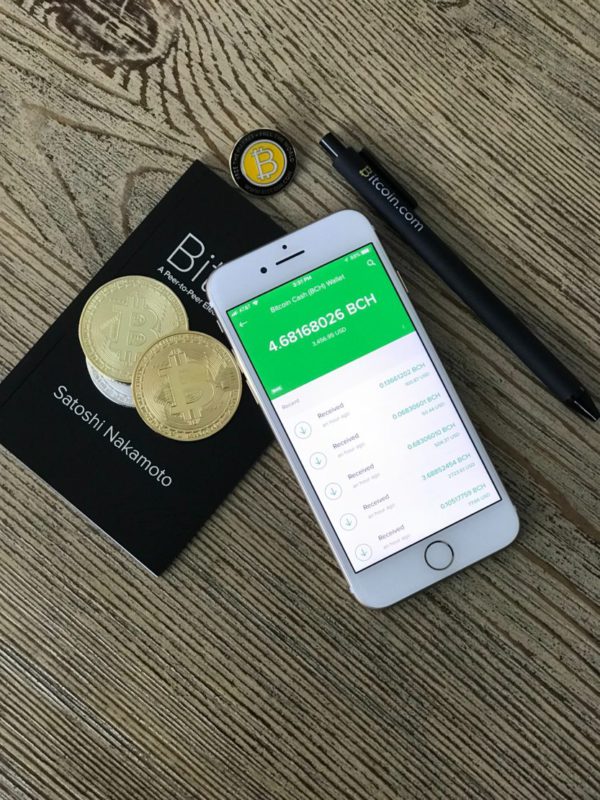A Guide to Bitcoin Custody: The Top 3 Amazing Types Of Custody Wallets
In the wild west of cryptocurrency, securing your Bitcoin holdings is paramount. Unlike traditional investments held by banks or brokerages, Bitcoin resides on a decentralized network, placing the onus of security entirely on the owner. This is where Bitcoin custody comes into play. Bitcoin custody refers to the practices and solutions employed to safeguard your private keys, the digital keys that grant access to your Bitcoin. With the ever-evolving landscape of cryptocurrency, understanding the different types of Bitcoin custody solutions is crucial for making informed decisions about protecting your digital assets.
The Heart of the Matter: Private Keys and Security
At the core of Bitcoin security lies the concept of public-key cryptography. Each Bitcoin user possesses a unique pair of cryptographic keys: a public key and a private key. The public key acts like your bank account number – it’s what you share with others to receive Bitcoin. The private key, however, is akin to your ATM card PIN – it’s the essential secret that allows you to spend your Bitcoin. Whoever holds the private key has complete control over the associated Bitcoin.
The Two Main Avenues of Bitcoin Custody: Self-Custody vs. Third-Party Custody
In the realm of Bitcoin, custody refers to who controls the private keys that unlock your digital assets. These private keys are essentially the passwords to your Bitcoin, granting access to spend or transfer it. Understanding the two main avenues of Bitcoin custody – self-custody and third-party custody – is crucial for securing your investment and aligning with your risk tolerance and technical expertise.
1. Self-Custody: Taking Full Control
Self-custody empowers you to be your own bank for your Bitcoin. You take complete responsibility for storing your private keys and managing your Bitcoin holdings. This approach offers several advantages:
- Enhanced Security: By eliminating third-party involvement, you minimize the risk of hacks or breaches that could compromise your Bitcoin. You have complete control over who has access to your private keys.
- Privacy: You hold all the cards regarding your financial information. Third-party custodians might collect and store your data, but with self-custody, your transactions remain entirely private.
- Freedom and Flexibility: You have complete autonomy over your Bitcoin. You can move it freely between wallets and exchanges without restrictions imposed by custodians. You can also choose to participate in activities like mining or running your own node.
However, self-custody also comes with significant responsibilities:
- Technical Expertise: Managing your private keys securely requires technical knowledge. You’ll need to understand how to use crypto wallets, back up your private keys properly, and implement robust security measures to protect them from loss or theft.
- Risk of Loss: If you lose your private keys due to technical malfunction, hardware failure, or even forgetting them, your Bitcoin becomes irretrievable. Disaster recovery plans and secure backups are essential.
- Inconvenience: Self-custody can be cumbersome, especially for beginners. Managing transactions and interacting with the blockchain requires a deeper understanding of cryptocurrency compared to using a third-party custodian.
Suitable for: Tech-savvy users who value privacy, security, and complete control over their Bitcoin. Individuals comfortable with the responsibility of managing their own private keys and security measures.
2. Third-Party Custody: Convenience with a Caveat
Third-party custody services, often provided by cryptocurrency exchanges or custodial wallets, take on the responsibility of storing your private keys for you. This approach offers a more user-friendly experience:
- Convenience: Third-party custodians handle the complexities of private key management. You can easily buy, sell, and trade your Bitcoin through a user-friendly interface, similar to traditional online banking.
- Accessibility: Third-party custodians offer beginner-friendly platforms, making it easier for newcomers to enter the Bitcoin market without needing extensive technical knowledge.
- Recovery Options: Some custodians offer recovery options in case you lose your login credentials. This can provide a safety net for users who are concerned about losing access to their Bitcoin.
However, relinquishing control over your private keys comes with its own set of risks:
- Counterparty Risk: You are trusting a third party with your valuable assets. In the event of a hack, security breach, or even bankruptcy of the custodian, your Bitcoin could be at risk.
- Limited Control: Custodians might impose restrictions on how you can use your Bitcoin. They may limit withdrawals, prevent participation in certain activities like mining, or have minimum holding requirements.
- Privacy Concerns: Custodians collect and store your personal information, and their transaction fees might be higher compared to self-custody options.
Suitable for: New cryptocurrency users who prioritize convenience and user-friendliness. Individuals who are comfortable with a custodian managing their private keys and understand the associated risks.
Choosing the Right Path
The best Bitcoin custody option depends on your individual needs and risk tolerance. Here are some factors to consider:
- Technical Expertise: Are you comfortable with the technical aspects of managing your own private keys?
- Security Priorities: Do you value complete control over your security, or are you comfortable with a custodian handling it?
- Investment Size: For smaller holdings, convenience might outweigh the risks of third-party custody. For larger investments, self-custody might be preferable.
- Accessibility Needs: Do you require frequent trading or easy access to your Bitcoin?
Ultimately, both self-custody and third-party custody offer valid avenues for holding Bitcoin. By understanding the advantages and disadvantages of each approach, you can make an informed decision that aligns with your financial goals and risk tolerance.
Also, read – Top 10 Intriguing Reasons Bitcoin ETFs Deserves Center Stage Over Other Cryptocurrencies
Beyond the Binary: Exploring Hybrid and Multi-Signature Solutions
The world of Bitcoin custody isn’t confined to the binary choice between self-custody and third-party custody. Recognizing the limitations of each approach, innovative solutions have emerged to offer a middle ground: hybrid and multi-signature custody.
1. Hybrid Custody: A Marriage of Convenience and Control
Hybrid custody combines elements of self-custody and third-party custody, aiming to provide the best of both worlds. Here’s how it works:
- Splitting the Keys: A portion of the private key is stored by the user in a hardware wallet, while another portion is held by a trusted custodian. This multi-party control adds an extra layer of security compared to single custodian solutions.
- Transaction Authorization: Spending Bitcoin requires both parties’ authorization. This mitigates the risk of unauthorized transactions by either the user or the custodian.
- Enhanced Security: By distributing the private key, hybrid custody makes it more difficult for a single point of failure to compromise the entire Bitcoin holdings.
However, hybrid custody also comes with its own considerations:
- Complexity: Setting up and managing a hybrid custody solution can be more complex than either self-custody or third-party custody alone.
- Custodian Selection: Choosing a reputable and trustworthy custodian is crucial in a hybrid model. Researching the custodian’s security practices and track record is essential.
- Limited Availability: Hybrid custody solutions are still a relatively new concept and might not be widely offered by all custodians.
Suitable for: Users who value a balance between security and convenience. Individuals comfortable with some technical aspects but prefer a custodian to handle a portion of the private key management.
2. Multi-Signature Custody: Shared Control for Increased Security
Multi-signature (multisig) custody allows for shared control over Bitcoin using a single wallet. Here’s the breakdown:
- Multiple Keys, One Wallet: Multiple private keys are required to authorize a Bitcoin transaction. These keys can be held by different users or devices, creating a collaborative Bitcoin custody model.
- Customizable Thresholds: The number of signatures required for a transaction can be customized. For instance, a 2-of-3 multisig setup would require two out of the three private keys to approve a transaction.
- Enhanced Security: Multisig significantly reduces the risk of unauthorized spending. Even if one private key is compromised, the attacker would still need to obtain the others to steal the Bitcoin.
However, multisig custody also has some drawbacks:
- Complexity: Setting up and managing a multisig wallet can be technically challenging, especially for beginners.
- Coordination Required: All parties holding private keys need to be available and agree to authorize transactions, which can be inconvenient for some situations.
- Loss of a Key: Losing a single private key in a multisig setup can render the remaining keys unusable, potentially leading to lost Bitcoin.
Suitable for: Users who prioritize security and control above all else. Individuals comfortable with technical aspects of crypto and who value collaborative Bitcoin custody models.
Hybrid and multi-signature custody solutions offer valuable alternatives to the traditional self-custody vs. third-party custody debate. These models cater to users who seek a balance between security, convenience, and control over their Bitcoin holdings. As the cryptocurrency space matures, we can expect further advancements in custody solutions, offering greater flexibility and security for Bitcoin investors.
Choosing the Right Bitcoin Custody Solution: A Tailored Approach
The landscape of Bitcoin custody is no longer a one-size-fits-all scenario. With an array of options available, selecting the right custody solution requires careful consideration of your individual needs and priorities. Here’s a roadmap to guide you in making an informed decision:
1. Assess Your Risk Tolerance:
- Security-First: If safeguarding your Bitcoin is paramount, prioritize solutions like multisig wallets or hybrid custody with reputable custodians. Self-custody might be suitable for the highly security-conscious, but understand the technical complexities involved.
- Convenience-Driven: If ease of use is your primary concern, consider third-party custodians with user-friendly interfaces. However, be aware of the counterparty risk and potential limitations on controlling your Bitcoin.
2. Evaluate Your Technical Expertise:
- Tech-Savvy Users: If you’re comfortable with technical aspects of cryptocurrency, self-custody using hardware wallets offers maximum control. However, ensure you have robust security measures and backup plans in place.
- Cryptocurrency Newbies: For those new to the space, third-party custodians with user-friendly platforms can ease the learning curve. However, prioritize established custodians with strong security practices.
3. Consider Your Investment Size:
- Smaller Holdings: For smaller Bitcoin investments, the convenience of third-party custody might outweigh the potential risks.
- Larger Investments: For significant holdings, the potential losses associated with third-party custody might make self-custody or hybrid solutions more appealing, despite the added responsibility.
4. Analyze Your Access Needs:
- Frequent Trading: If you plan on trading Bitcoin regularly, a third-party custodian with easy access features might be more suitable.
- Long-Term Storage: For long-term holders prioritizing security, self-custody or a hybrid solution with a secure custodian can offer peace of mind.
Additional Tips:
- Research Custodians: If opting for a third-party custodian, thoroughly research their security practices, insurance policies, and track record.
- Start Small: If you’re new to self-custody, begin with a small amount of Bitcoin to gain experience before managing larger holdings.
- Stay Updated: The cryptocurrency space is constantly evolving. Keep yourself informed about security best practices and advancements in custody solutions.
Remember: There’s no single “best” solution for everyone. By understanding the advantages and disadvantages of each Bitcoin custody approach and carefully considering your individual circumstances, you can choose the option that best safeguards your Bitcoin while aligning with your risk tolerance and investment goals. The future of Bitcoin custody is likely to see further innovation, offering even more tailored solutions for a wider range of user needs.
A Guide to Bitcoin Custody: Navigating the Evolving Landscape
Bitcoin, the pioneering cryptocurrency, has revolutionized the way we think about money and value. However, securely storing your Bitcoin is crucial to safeguarding your investment. This guide has delved into the intricacies of Bitcoin custody, equipping you with the knowledge to navigate the evolving landscape and make informed decisions.
The cornerstone of Bitcoin custody lies in understanding the concept of private keys. These cryptographic keys act as passwords, granting access to spend or transfer your Bitcoin. The two main avenues for Bitcoin custody – self-custody and third-party custody – offer distinct advantages and disadvantages.
Self-custody empowers you to be your own bank. You take complete responsibility for storing your private keys and managing your Bitcoin holdings. This approach offers unparalleled security, privacy, and complete control. However, it demands technical expertise, robust security measures, and disaster recovery plans to prevent irreversible loss.
Third-party custody services, often provided by cryptocurrency exchanges or custodial wallets, take on the burden of managing your private keys. This translates to user-friendly interfaces and convenient access, ideal for beginners. However, relinquishing control over your private keys introduces counterparty risk, potential limitations on how you can use your Bitcoin, and privacy concerns.
Recognizing the limitations of each approach, hybrid and multi-signature custody solutions have emerged. Hybrid custody splits the private key between you and a trusted custodian, offering a balance between convenience and security. Multi-signature custody allows for shared control over Bitcoin within a single wallet, requiring multiple signatures for transactions, significantly enhancing security.
Ultimately, the choice of Bitcoin custody solution boils down to a tailored approach. Carefully assess your risk tolerance, technical expertise, investment size, and access needs. Prioritize security-first solutions like multisig wallets or hybrid custody with reputable custodians if safeguarding your Bitcoin is paramount. Opt for user-friendly third-party custodians if convenience is your primary concern, but acknowledge the associated risks.
Remember, the cryptocurrency space is dynamic. Constantly stay updated on security best practices and advancements in Bitcoin custody solutions. Start small with self-custody to gain experience if you’re new to the concept. When choosing a third-party custodian, meticulously research their security practices, insurance policies, and track record.
The future of Bitcoin custody is brimming with potential. As the space matures, we can expect even more innovative solutions tailored to a wider range of user needs. By understanding the core principles of Bitcoin custody, the various available options, and your unique circumstances, you can make an informed choice that empowers you to navigate the exciting world of Bitcoin ownership with confidence and security.
Stay informed with daily updates from Blockchain Magazine on Google News. Click here to follow us and mark as favorite: [Blockchain Magazine on Google News].
Get Blockchain Insights In Inbox
Stay ahead of the curve with expert analysis and market updates.
latest from tech
Disclaimer: Any post shared by a third-party agency are sponsored and Blockchain Magazine has no views on any such posts. The views and opinions expressed in this post are those of the clients and do not necessarily reflect the official policy or position of Blockchain Magazine. The information provided in this post is for informational purposes only and should not be considered as financial, investment, or professional advice. Blockchain Magazine does not endorse or promote any specific products, services, or companies mentioned in this posts. Readers are encouraged to conduct their own research and consult with a qualified professional before making any financial decisions. The featured image used is just a creative depiction of the title and it does not intend to hurt sentiments of any person or institution. If it hurts anyone sentiments, please do not hesitate to reach out to Blockchain Magazine.

 Bitcoin
Bitcoin  Ethereum
Ethereum  XRP
XRP  Tether
Tether  Solana
Solana  Dogecoin
Dogecoin  USDC
USDC  Cardano
Cardano  Lido Staked Ether
Lido Staked Ether  TRON
TRON  Chainlink
Chainlink  Avalanche
Avalanche  Sui
Sui  Wrapped stETH
Wrapped stETH  Wrapped Bitcoin
Wrapped Bitcoin  Stellar
Stellar  Toncoin
Toncoin  Hedera
Hedera  Shiba Inu
Shiba Inu  Polkadot
Polkadot  WETH
WETH  LEO Token
LEO Token  Litecoin
Litecoin  Bitcoin Cash
Bitcoin Cash  Hyperliquid
Hyperliquid  Bitget Token
Bitget Token  Official Trump
Official Trump  Uniswap
Uniswap  Pepe
Pepe  Wrapped eETH
Wrapped eETH  USDS
USDS  NEAR Protocol
NEAR Protocol  Ethena USDe
Ethena USDe  Aave
Aave  Aptos
Aptos  Internet Computer
Internet Computer  Ondo
Ondo  WhiteBIT Coin
WhiteBIT Coin  Ethereum Classic
Ethereum Classic  Cronos
Cronos  Monero
Monero  Mantle
Mantle  POL (ex-MATIC)
POL (ex-MATIC)  Render
Render  Dai
Dai  Algorand
Algorand  MANTRA
MANTRA 




